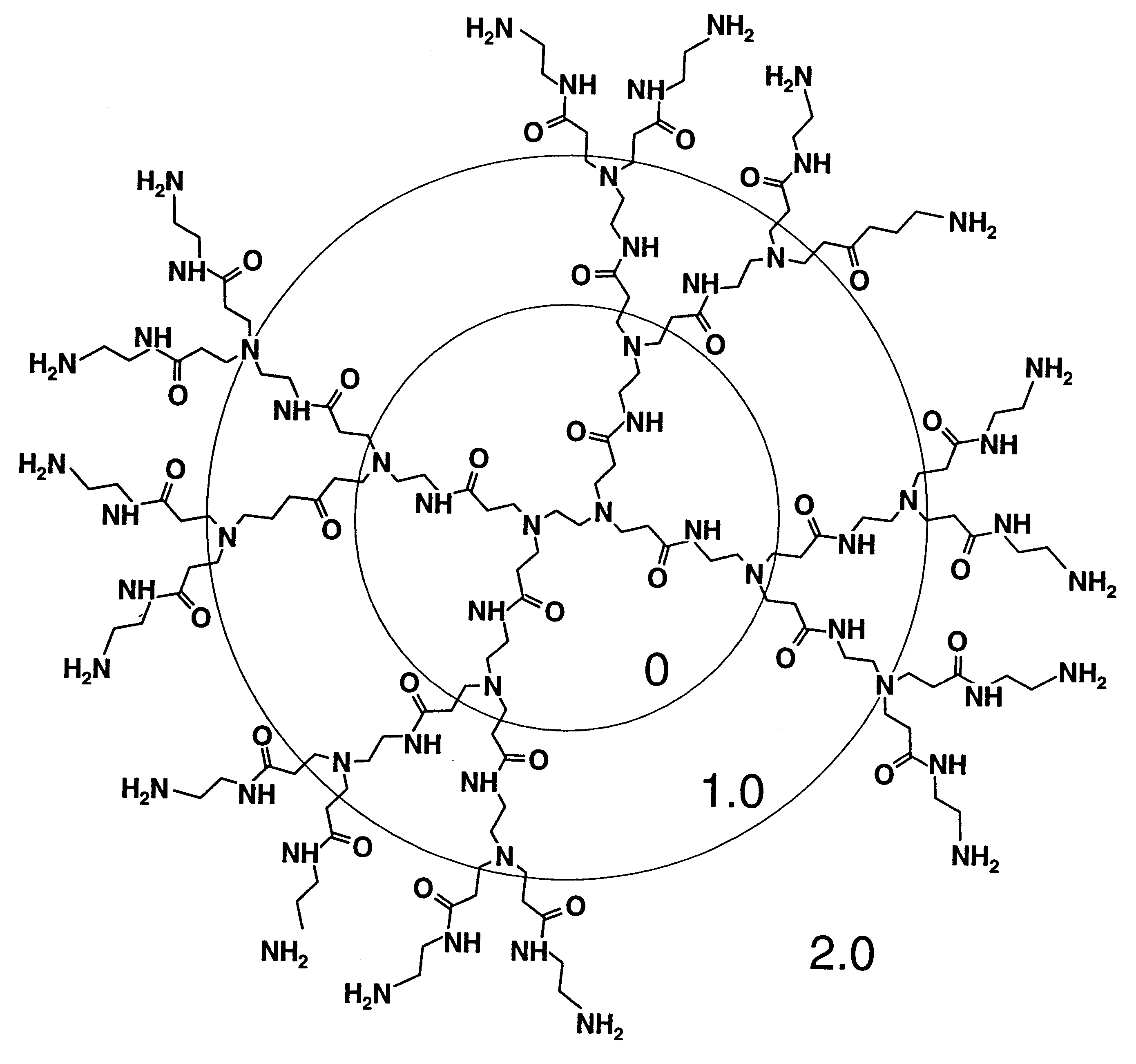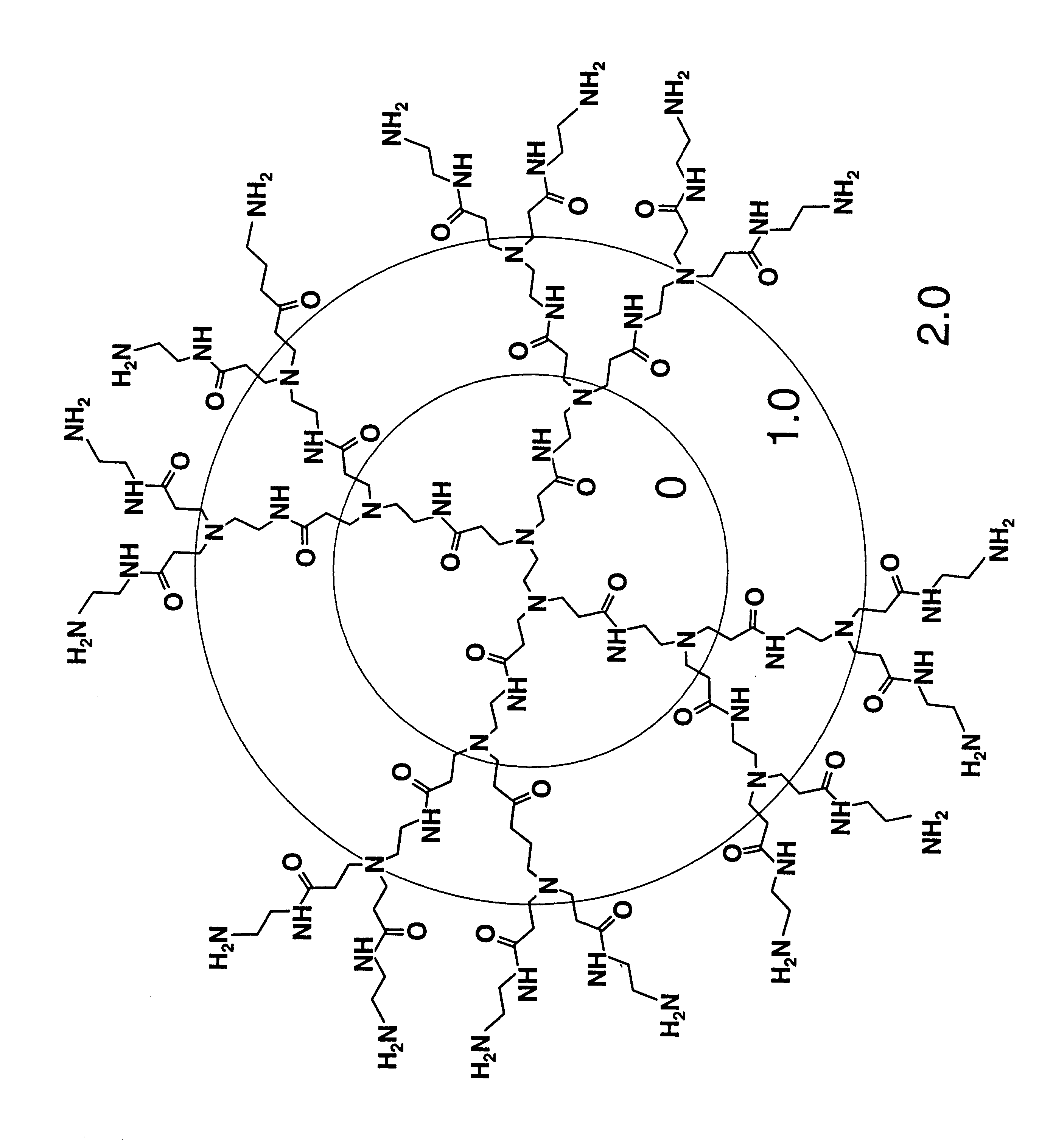Assay for compounds which affect conformationally altered proteins
- Summary
- Abstract
- Description
- Claims
- Application Information
AI Technical Summary
Benefits of technology
Problems solved by technology
Method used
Image
Examples
example 1a
Branched Polyamines Inhibit Formation of Nascent PrP.sup.Sc and Induce Clearance of Pre-existing PrP.sup.Sc
Western blots were probed with 3F4 monoclonal antibody which recognizes newly expressed MHM2 PrP. ScN2a cells were exposed to SuperFect for 3 h and harvested 3 d after removal of SuperFect. Gells were run on both undigested, control sample and a sample subjected to limited proteolysis. The samples were run in separate lanes 1-6 with a control and limited proteolysis sample for each of the 6 lanes as follows: Lane 1: DOTAP-mediated transfection. Lane 2: 30 .mu.g / ml SuperFect, 5 .mu.g pSPOX MHM2. Lane 3: 75 .mu.g / ml SuperFect, 5 .mu.g pSPOX MHM2. Lane 4: 150 .mu.g / ml SuperFect, 5 .mu.g pSOX MHM2. Lane 5: 150 .mu.g / ml SuperFect, 10 .mu.g pSPOX MHM2. Lane 6: No addition of either transfection reagent or DNA. Forty .mu.l of undigested brain homogenate was used in these studies while those samples subjected to limited digestion with proteinase K were concentrated 25-fold prior to SDS...
example 1b
The blot described above was stripped of antibody, exposed to labeled RO73 and redeveloped. The antibody 3F4 used in Example 1 binds to PrP.sup.C but not to PrP.sup.Sc. However, RO73 binds to PrP.sup.Sc and PrP.sup.C. Lanes 1, 2 and 3 show decreasing amounts of PrP.sup.Sc and lanes 4 and 5 show no detectable PrP.sup.Sc.
example 2a
Gels were run on undigested controls 1-4 and as above, samples subjected to limited proteolysis. The lanes were as follows: Lane 1: No SuperFect. Lane 2: 30 .mu.g / ml SuperFect. Lane 3: 75 .mu.g / ml SuperFect. Lane 4: 150 .mu.g / ml SuperFect. ScN2a cells were exposed to SuperFect for 3 h and harvested 3 d after removal of SuperFect. Apparent molecular weights based on migration of protein standards are 33.9, 28.8, and 20.5 kDa. In that each sample was tested after the same time period the results show the dose-dependent effect of SuperFect on PrP.sup.Sc removal. Lanes 1, 2 and 3 show decreasing amounts of PrP.sup.Sc and lane 4 shows no detectable PrP.sup.Sc.
PUM
| Property | Measurement | Unit |
|---|---|---|
| Acidity | aaaaa | aaaaa |
| Dimensionless property | aaaaa | aaaaa |
| Body weight | aaaaa | aaaaa |
Abstract
Description
Claims
Application Information
 Login to View More
Login to View More - R&D
- Intellectual Property
- Life Sciences
- Materials
- Tech Scout
- Unparalleled Data Quality
- Higher Quality Content
- 60% Fewer Hallucinations
Browse by: Latest US Patents, China's latest patents, Technical Efficacy Thesaurus, Application Domain, Technology Topic, Popular Technical Reports.
© 2025 PatSnap. All rights reserved.Legal|Privacy policy|Modern Slavery Act Transparency Statement|Sitemap|About US| Contact US: help@patsnap.com


